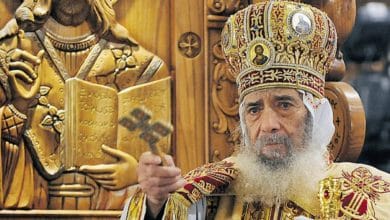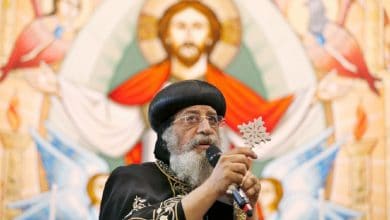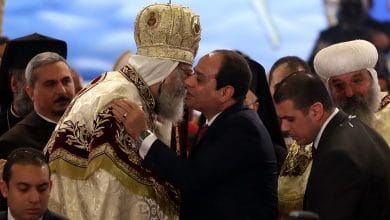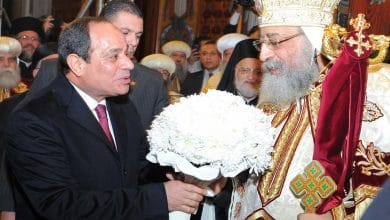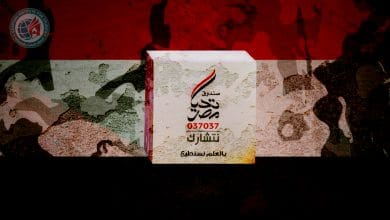
The Egyptian Church and the Coptic State
There are several reports that have been circulated for decades about plans to divide Egypt, as part of redrawing the region’s maps and imposing a new American strategy, known in the media as the new Sykes-Picot project.
However, these reports took a serious curve within the Egyptian public sphere during the referendum on the secession of South Sudan from 9 to 15 January 2011[1] that ended up with dividing Sudan into two independent states. Then, the advent of the January revolution in Egypt (2011) and the events that followed it, as well as the internal interactions between various parties and their external intertwines shed more light on this thorny file.
This part of the study about the Orthodox Church in Egypt will shed light on the Church’s attitude towards the division plans that have been circulated from time to time.
In previous parts, we concluded that the Church, metaphorically speaking, has become administratively closer to an empire that enjoys autonomy independent of the rest of the Egyptian state. Besides having its own “people”, the Church owns a large economic activity that the Egyptian state has nothing to do with, and vast areas of land, exceeding the area of some countries, that the Egyptian security services cannot approach or enter without taking prior permission[2].
Thus, the question that this part attempts to answer here is: Will the Church be satisfied with this growing empire or will it strive to effectively transform into an independent state within the framework of the circulated division plans targeting Egypt?
Egypt Division Plans
Many sources report about a set of division plans for the Egyptian state, which we can organize chronologically as follows:
1- The Karanjia document in the 1950s:
This division plan is named after the document’s discoverer, namely, R. K. Karanjia, an Indian writer that informed former Egyptian President Gamal Abdel Nasser of the plan in detail, where the latter ordered translation of the document into Arabic; and it was published in a book titled, “The Dagger of Israel” that was printed many times at the time.
The writer conducted an interview with the former Minister of Defense, Moshe Dayan, about the document, where he expressed his amazement at the Jews’ daring to publish such plan without being afraid of the reaction of the Arabs towards it. However, Dayan reportedly said his famous statement: ‘Don’t worry, Arabs don’t read’!”[3]
The contents of that document, which was published in 1957, revealed the details of a new partition scheme proposed by the Sykes-Picot group, behind which the Jews stand directly without an intermediary, and in it the discussion of a state for the Copts in Egypt was mentioned, along with other detailed proposals in other regions.
2- Oded Yinon Plan or “Zionist Plan for the Middle East in the 1980s”[4]
The plan was first revealed in an article published by Oded Yinon[5] in Hebrew in KIVUNIM (Directions), a Journal for Judaism and Zionism; Issue No, 14–Winter, 5742, February 1982.
The plan provides many details about formation of the Arab region, especially what Yinon says about the Coptic state in this regard: “The establishment of the Christian Coptic state in Upper Egypt with weak states around it is the key to a historical process in the future that was postponed due to the peace agreement (with Egypt), but is inevitable in the long run.”[6]
The American Center for Global Studies (Global Research) website has re-published the plan that was translated into English on November 7, 2015 by Israel Shahak with a recent commentary and analysis by the Global Research editor Michel Chossudovsky, which gives the document more credibility, despite the passage of nearly 40 years since it was early published.
“This document, which was published for the first time in February 1982, related to the establishment of “Greater Israel”, constitutes the cornerstone of the policies of the Zionist political forces represented in the current government of Israeli Prime Minister Benjamin Netanyahu, as well as in the policies of the Israeli army and intelligence institutions.”[7]
Thus, the document has made it clear that the Coptic state project is still of utmost importance to the current Israeli government and the American decision-maker.
3- Bernard Lewis[8] Maps:
Lewis’s maps are the clearest of the plans, as they were based on cooperation between Bernard Lewis and the US Department of Defense and were voted on in a secret session of the US Congress in 1983.[9]
Lewis’s maps show the complete fragmentation of the Islamic world, not just the Arab region, including the establishment of a Coptic state in Egypt.
Bernard Lewis strengthened his project in 1992 by adopting the philosophy of the so-called (the death of the Arab world) in terms of being a political entity, suggesting the use of the term (Middle East) instead of (Arab world), which has actually happened.[10]
Bernard Lewis’s map to divide Egypt and Sudan:
In his plan, Bernard Lewis mentıoned four countries in Egypt, as shown in the above map:
1- Sinai and the East Delta: under Jewish influence (to make the Jews’ dream from the Nile to the Euphrates come true).
2- The Coptic State: Professor Hamid Rabie, a well-known Arab thinker and one of the leading figures in contemporary Arab political thought who worked as a professor and head of the Department of Political Science at Cairo University, talks about it, saying: This state “extends from the south of Beni Suef to the south of Assiut, and has expanded to the west to include Fayoum, which in turn extends in a desert line linking this region to Alexandria, which is planned to become the capital of the Coptic state, and thus separates Egypt from Africa’s white Muslim countries and the rest of the Nile Valley.[11]
Then, he goes on, asking:
First: Why are the field research conducted by the American agencies is concerned in particular with the Fayoum governorate and the city of Aswan?
Second: Does the interest in Fayoum governorate stem from the Israeli perception regarding the Coptic state, the basis of which is the annexation of Fayoum to the other governorates mentioned above, and the construction of a desert road linking this region through Wadi El-Natrun with Alexandria, which is planned to be the capital of the new state, and has expanded to include part of the coastal area extending to Marsa Matrouh?[12]
What is surprising in the comment of Dr. Hamid Rabie, that he mentioned in 1983, is that the plan was literally implemented on the ground to change the region’s geography, as tracked by Amer Abdel Moneim, a researcher, which will be addressed later.
3- The Nuba State: “To further deepen this division, the southern part extending from Upper Egypt to northern Sudan is linked with the Greater Desert region under the name of Nubia, where Aswan is planned to become the capital of the new country, be it under the name of Nubia or Berber State”[13].
4- Muslim Egypt: where its capital will remain as Cairo, with the remaining part of Egypt, but it is also intended to be under Israeli influence (as it falls within the scope of the so-called “Greater Israel”, which the Jews seek to establish).
Also, there is an important testimony in this regard that was published by Eng. Mamdouh Hamza in July 2019 on his Twitter account, speaking about the same division maps, but from his own background as a civil engineer who has one of the largest engineering offices in the Middle East. In fact, the testimony of Mamdouh Hamza is of great value for two reasons: The first is that the man has intertwined relations with the Egyptian regime, especially in the field of construction, roads and bridges; and the second is that he is not affiliated with the Islamic opposition, which is usually demonized.[14]
Hamzah goes on saying, “The express railway, whose contract has been signed, costing several billions through loans, links Jalalah (with no population) and Alamein (with no population), where there is no urgent need to build it unless it is part of a scheme that we do not know.” Then he goes on saying, “Why do I write this comment now? When I heard about and saw the size of the headquarters of the Council of Ministers in Al-Alamein, I realized that this is not a seasonal building; rather it is a permanent premises in light of its very large size (about 8 times the current headquarters)!!”[15]
Junta and division plans:
After assuming power following the January revolution (2011), the Supreme Council of the Armed Forces (SCAF) announced that it found documents of a plan to divide Egypt into three states, namely, a Nubian state in the south, a Christian state in Upper Egypt, and a Muslim state in the east.[16]
Also, the Egyptian Wafd newspaper published an important report in the same context on February 8, 2012, that the investigating judges in the foreign funding case, Sameh Abu Zaid and Ashraf Al-Ashmawi, said in a press conference at the Ministry of Justice’s headquarters they found maps in the headquarters of the American Republican Institute in Dokki, Giza, about dividing Egypt to the four states: in the Delta, Canal, Greater Cairo, and Upper Egypt.[17]
Self-rule for Copts
Now, let us move from monitoring the division plans for the Egyptian state to addressing the role of the Church or some of the Copts in this regard:
The first attempt by some Copts to demand political independence from the Egyptian state was at the beginning of the era of Gamal Abdel Nasser, when “Ibrahim Fahmy, a Coptic lawyer and a graduate of the Church’s Sunday Schools, announced formation of the ‘Coptic Nation Group’, with branches at the level of Egypt governorates. Fahmy called for reviving the concept of the Coptic nation by adhering to Church customs and traditions, reviving the Coptic language, using the Coptic calendar, as well as issuing newspapers and magazines that are concerned with the Coptic minority, until he called in a statement for self-rule for the Copts of Egypt.”[18]
However, this attempt ended with the dissolution of the group and the arrest of its members after they had kidnapped Patriarch Yusap II and forced him to resign, and had control of the papal headquarters.
President Sadat and the Coptic State:
The first Egyptian official to accuse the Church, specifically Pope Shenouda III, of seeking to establish a Coptic state was Egyptian President Anwar Sadat during an address to the People’s Assembly (parliament) on May 14, 1981, saying, “I have reports that the Pope is seeking establishment of a state for the Copts in Upper Egypt, with Asyut as its capital.” Sadat then wondered, “He (the Pope) requested a permit for building 25 Churches a year, and I gave him a permit for building fifty Churches a year, so what does he want then?”[19]
Declaration of a Coptic state by Diaspora Copts:
In coincidence of the referendum on the secession of Christian-majority South Sudan from the Muslim north, Diaspora Copts declared an “independent Coptic state in Egypt” on 7 October 2011 in New York City, saying that they “organized a meeting of the founding body of the Coptic state, where Dr. Ismat Zaglmeh was chosen as President of the Coptic State, Counselor Morris Sadiq as Executive Secretary, Eng. and Media man Nabil Bessada as Secretary-General, and Eng. Elia Bassili as Commissioner General for International Coordination of the Coptic State[20].
It is noteworthy that Pope Shenouda III at that time did not take any ecclesiastical action against the Diaspora Copts, which implies tacit approval for their move; as all those who had attempted to take any action that may be much less than this had been subject to heavy penalties from the Church.[21]
The geography of the planned Coptic state:
Amer Abdel Moneim, a researcher specialized in this file, has traced clearer details of the development of the plan’s implementation stages and the change of geography in favor of this project, as Dr. Hamed Rabi indicated in the early eighties, when he said:
First: The Saint Macarius monastery, also known as Anba Makar monastery, began to expand and control the whole Wadi al-Natrun region, which it has achieved, where in a few years the monastery did the following:
A- The Saint Macarius monastery seized 200 feddans under the so-called ‘land claims’, according to Law No. 100 of 1964.
B- The monastery seized 300 feddans by virtue of Prime Minister Decree No. 16 of 1977.
C- The monastery received a 1,000 feddan grant from Sadat on 23 August 1978.
D- The monastery seized 2,000 feddans from the Al-Jawabis tribe.
Second: When the Saint Macarius monastery took control of the valley below the sea level, it began to move north to control the lands there until El Alamein on the northern coast, where the monastery seized thousands of kilometers under ‘land claims’ in the western desert under the pretext of reclamation.
In the early nineties, newspapers reported that the Saint Macarius monastery placed its hand on fifty thousand feddans near the city of Hammam at the sixty-ninth kilometer on the Alexandria-Matrouh Road, and on the Mediterranean coast, two hundred kilometers from Wadi al-Natrun.
Third: The Saint Macarius monastery has moved east since the seventies, to control the areas between the monastery and the Cairo-Alexandria Desert Road, seizing the lands between the 26th. kilometer to the 118th kilometer on the Cairo-Alexandria Desert Road.
Fourth: supporters of the separatist plan exploited the power crisis before and after the January revolution (2011) until now, to seize thousands of feddans in the Western desert, from the south of the country to the north. The last of this Christian expansion on the ground was the seizure by some monks from Alexandria of 9,000 feddans in Wadi El-Rayan in Fayoum, which is basically a natural reserve, taking advantage of the weakness of state power and political polarization that had created a vacuum, where the monks built walls around the natural reserve that they had robbed, and prevented any presence of the state nearby.
Today, the government’s decision to start implementation of the al-Wahat (oases), El-Alamein and Central Sinai as new governorates comes to crown the efforts of Bernard Lewis and his team, and the monks that had seized the state’s lands, recognizing the tiny state of Wadi al-Natrun and add to it a desert extension without a population density of Muslims in the name of the al-Wahat governorate to allow further expansion later without hindrance.”[22]
“This is to protect its desert extension from any population encroachment, and to stop any population flow from the Sixth of October city to the newly declared al-Wahat governorate, by grabbing the desert hinterland of the Giza governorate and inventing a new governorate in the name of al-Wahat, to ensure that the desert is free of residents until the process of complete control of the area is fulfilled.”[23]
Map of Wadi El-Rayan – Source: Steps in Geography
The Alexandria monks seized Wadi El-Rayan, although it is a nature reserve, and built a 10-kilometer-long wall around it during the chaos that followed the January revolution (2011). Then they engaged in a “dispute” with the Ministry of Environment and refused to give up the huge area of land that they had seized, where the Church at that time disowned them and declared that they do not represent the Coptic Church.[24]
But on Wednesday, August 2, 2017, the Egyptian people were surprised by a statement issued by the Church spokesperson, saying that “an agreement has been signed between the Church and the Ministry of Environment to legalize the practice of Church activities and the activities of the Saint Macarius monastery in Wadi El-Rayan, within the space in which they now existing (subject of the crisis), surrounded by walls, and located north of Wadi Al-Rayyan Road (in the center of the country).
This statement of the Church comes in contrast to its declared position about two years before, where it refused to consider the archaeological place which was seized by a number of monks under ‘land claims’ pretext, as a monastery.[25]
This highlights two important points:
1- The area that the monks seized is the same area that Dr. Hamid Rabie talked about in 1983 mentioned above at the beginning of this article, as he talked about what was happening on the ground in terms of imposing a fait accompli for the establishment of the Coptic state, where Fayoum and Wadi al-Natrun are a large part of this battlefield.
2- The strategy that the Church follows in the actions that cause media uproar around them is that it usually keeps silent or repudiates such actions until the storm subsides, then people find out that it was the main driver of those actions. After the Church had disowned the monks that had illegally seized the Wadi Al-Rayyan land in 2011, it was the party that concluded a deal with the regime in 2017 regarding the illegally seized land!!
In fact, this story illustrates the extent of the corruption and treachery that deeply struck the Egyptian regime, especially during the era of Sisi, and how far the state’s authority is weak compared to the Church’s authority.
What we understand from the division plans:
According to this brief overview of the most important division plans and what has been done and is being implemented on the ground the following results, we can conclude the following:
1- The implementation of the Zionist-American plans to divide Egypt actually began during the Mubarak era, where circles within the Egyptian authority used to facilitate or condone what was happening in the West of the Nile of the Church and monasteries’ control over vast areas of state-owned land to impose a fait accompli that serves the likely declaration of the Coptic state in the future.
2- This move has unprecedentedly increased during the era of Sisi, whose survival in power depends on the continued support of the army and the Church.
3- There is difference between the Church leadership and Coptic citizens with respect to this file, as the majority of Egyptian Copts reject this idea and know very well that it is tantamount to collective suicide.
4- The position of the Church as part of the deep state in Egypt towards the division plans can be understood as follows:
A- An influential part of the Church leadership adopts this proposition and seeks its success in all ways and with use of any means, as it is naive to believe that what is going on to the west of the Nile is not done with the blessing and support of the Church, as shown above.
B- Part of the Church leadership knows that the idea of division is a foolish idea that cannot succeed, but it is in line with the external parties that provide support for such plans so that their support for the Church can continue, whether through provision of financial or political support. Accordingly, after all, any increase in the size of the “Church’s own empire” is welcome, and may ultimately be preferable to the establishment of the state itself.
C- There is a part of the Church leadership that is not convinced of the division idea altogether, believing in the unity of the Egyptian fabric and that sectarian strife is exceptional due to weakness of the state and strength of external parties and their interference. But they are the weakest party in the Church; and at the same time, they are used by the Church to whiten its face in media circles against anti-Church accusations that may harm its ideal mental image that it is keen to export to Egyptians.
5- The study focused on the Orthodox Church because it is the largest and most influential Church among other Churches in the Egyptian case. However, this does not necessarily mean that other Churches have no role in these hot and vital issues within the Egyptian affairs.
Conclusion
The issues of Egypt division and the Coptic state are not pipe dreams or rumors. Rather, they are plans supervised by foreign states, with budgets, schemes and work programs monitored, where they consider success in implementing these plans a guarantee of their continued domination over the region according to the ‘divide and rule’ approach.
This study is aimed at raising alarm bells for the wise ones among Muslims and Copts in this country, where its findings include the following:
1- The Egyptian Church turned into a state within the Egyptian state, based on the political project of Pope Shenouda III.
2- Diaspora Copts and American protection claimed by the International Religious Freedom Act (IRFA) have provided a strong backing for the Church since the Mubarak era until now. While Diaspora Copts enabled the Church to be financially independent from the state, with financial abundance estimated at billions annually, the American protection provided the Church with political independence and parity in the face of the Egyptian state.
3- The regime is held responsible for violence against the Copts to make sure they will continue to seek shelter in the government for fear of the Islamic scarecrow that the regime has been keen to use constantly.
4- The state did not fulfill its duty in finding permanent solutions for the Copts’ problems. Rather, the government resorted to security and temporary solutions, which increased sectarian tension.
5- While the Church’s power as an institution of the Egyptian state escalated up to being actually independent from it, this situation weakened the Copts as Egyptian citizens with complete rights and duties, as the Church strengthened the presence of the “sect” at the expense of “citizenship”.
6- The support provided by Church leaders, particularly Pope Tawadros II, to Al-Sisi, despite the brutal dictatorial pattern in dealing with opponents and the massacres that he has committed, has caused a structural religious defect in the Church’s relationship with its subjects. The Pope that is sanctified by the Copts, and is supposed to represent the highest moral model for them, does not hesitate to support a bloody tyrant ruler and defend his brutal crimes against his opponents, and even against the Copts themselves, to achieve temporary political gains.
7- The Church is no longer just a place of worship, as it has turned into a huge religious, political, and economic empire that may only compete with the economic empire of the army within the country.
8- Any talk about “persecution of the Copts” in Egypt is a groundless allegation.
However, the cause of the Church’s intense hostility to the late President Mohamed Morsi and the 2012 constitution that was paving the way for state supervision over the financial and economic activity of the Church, has become clear, where the interests of the army and the Church converged to eliminate the nascent democratic state. Although there is real sectarian violence between Muslims and Copts, however, the state bears responsibility for that in the first place.
9- The Egyptian government must secure protection of the rights of both Muslims and Copts on an equal footing as Egyptian citizens.
10- The Church leadership must not feel much euphoric over the privileges that they have acquired at the expense of the rest of the Egyptian people.
11- This study focuses on the Church’s role as an institution that plays a growing peer-to-peer political role in the Egyptian affair. Therefore, its findings should not be generalized to include all Copts, as the majority of Egyptian Copts live peacefully as Egyptian citizens that have all the same rights and duties.
12- The project to establish a Coptic state in Egypt is moving forward rapidly as part of a broader scheme to re-divide the Arab world once again; but this does not mean that it will succeed.
13- Foiling this scheme requires a fair and independent regime; strong and aware opposition and elite that are and capable of conducting a healthy and constructive community dialogue including all society segments; and a state that secures rights and security for all citizens.
Footnotes
[1] South Sudan: A New Country with Great International Support, BBC Arabic, 9/7/2011, accessed on 12/11/2020, Link.
[2] Economic Empire of the Egyptian Church, Mamdouh Almuneir, Egyptian Institute for Studies, 13/11/2020, Link.
[3] The Jewish shadow behind the partition projects, Dr. Abdul Aziz Al-Turki, Al-Bayan, 27/6/2016, accessed on 6/11/2020, Link.
[4] Yinon Plan, Marefa, Mohamed Saif Al-Dawla, accessed 11/5/2020, Link.
[5] Oded Yinon is an Israeli journalist, a former adviser to late Israeli Prime Minister Ariel Sharon, and a former senior official at the Israeli Foreign Ministry.
[6] Old Israeli documents about the contemporary wars in the region, Al-Jazeera Net, accessed 11/5/2020, Link.
[7] Ibid.
[8] Bernard Lewis is an orientalist of British origin, born May 31, 1916, died on May 19, 2018 at the age of 102 years old. A Jew and a Zionist with American nationality, Lewis graduated from the University of London in 1936, and worked there as a teacher at the History Department’s Eastern African Studies. He was one of the most important advisors to many Western leaders in Middle Eastern affairs.
[9] Bernard Lewis, Executioner of the Middle East and Engineer of Sykes-Picot 2, Adel Al-Gawgari, Arab Book House, 2013, p 6.
[10] The Nation Division Projects, Dr. Faris Al-Azzawi, Ruya Center for Research and Studies, accessed 6/11/2020.
[11] The most dangerous thing said by Hamed Rabie, Hesham Hamami, Arabi21, 19/6/2017, accessed on 6/11/2020, Link. According to Arabi21, the article was first published in Al-Ahram Al-Iqtisadi in 1983, issue of January 31.
[12] Ibid.
[13] Ibid.
[14] Mamdouh Hamza publishes a map that divides Egypt into 5 countries and capitals, the Arabic Network, accessed on 10/11/2020, Link – The official Twitter account of Eng. Mamdouh Hamza was blocked after he had been pressured by the security forces and accused in several cases, for posting this report.
[15] Foreign Funding and Bernard Lewis’s Plan for the Partitioning of Egypt, Al-Wafd, accessed on 11/11/2020, Link.
[16] Ibid.
[17] Ibid.
[18] Encyclopedia of Religions, Dorar Net website, accessed on 11/11/2020, Link.
[19] Sadat accuses Pope Shenouda III of seeking to establish a Coptic state, United Copts, Light-Dark Net, accessed on 11/11/2020, Link.
[20] Illusions of the Coptic State, François Bassili, Middle East Online, accessed on 10/11/2020, Link.
[21] The Copts declared their state in Upper Egypt, Fact International, accessed 12/11/2020, Link.
[22] Bernard Lewis’ Project to Divide Egypt, Amer Abdel Moneim, Way of Islam, accessed on 11/16/2020, Link.
[23] Ibid.
[24] With money, the monks seized “Wadi El-Rayan”, Arab Post, accessed on 11/15/2020, Link.
[25] Ibid.
